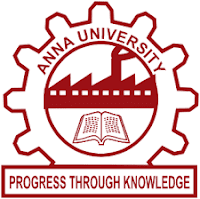Electrical and Electronics Measurement
Retest Question Bank
Problems:
1.
Unit 1- Errors based problem, PMMC & MI based problem
2.
Unit 2- Measurement of iron loss-based problems
3.
Unit 3 – AC and DC Bridges based problem
Part –
B
16 Marks:
1.
Explain the static and dynamic
characteristics of an instrumentation system.
2.
Elaborate the working of moving iron
instrument and derive the torque equation of the moving iron instruments.
3.
Elaborate the working of moving coil
instrument and derive the torque equation of the moving iron instruments.
4.
Illustrate in detail the construction and
working of an electrodynamometer type wattmeter.
5.
With a neat sketch explain single phase (induction
type) three phase energy meters.
6.
State Blondel’s theorem and explain how
the power measurement using two wattmeter method.
7.
Describe the step by process involved in
determination of B-H curve and hysteresis loop.
8.
Explain the measurement of iron losses
through two wattmeter method with test setup and derive the expression for
total iron losses.
9.
Summarize the role of instrument
transformer in measuring applications.
10.
Illustrate the modern slide wire DC
potentiometer and discuss how the potentiometer is standardized.
11.
Describe the calculation procedure to
measure resistance by Wheatstone bridge.
12.
Derive the expression for measurement of
unknown capacitance with a neat bridge circuit.
13.
Describe the measuring procedure for Anderson
bridge
14.
Illustrate the construction and working
principle of Magnetic tape recorder.
15.
Discuss in detail about the LED (include
seven segment display) and LCD displays
16.
Along with functional block diagram, explain the operation of a
Cathode Ray Oscilloscope
17.
What is a Data logger? What are its basic
components? What are the functions of data logger?
18.
Elaborate the types of resistive and inductive
transducers used for measuring pressure.
19.
Describe briefly data acquisition system
with generalized block diagram; explain its function and objectives.
20.
Elaborate smart sensors with built in
features. Compare with conventional sensors.
8Marks:
1.
Draw the block diagram showing the basic
functional elements of an instrument and explain the function of each.
2.
Describe in detail about standard and
explain its classification
3.
Explain the three types of operating
torques in detail
4.
Classify the different types of error in
measurement? Explain
5.
Explain in detail the calibration
techniques.
6.
Write a short note on Plotters
7.
Describe about various grounding
techniques.
8.
Explain electrostatic and electromagnetic
interference affected in instruments
9.
Describe the working principle of
piezoelectric transducer.
10.
Discuss in detail about Hall effect
transducer and mention some applications of Hall effect transducer.
11.
Discuss in detail about digital transducer
12.
Explain thermal imagers in detail.
Part -A
1.
Problems based on static error, Arithmetic
mean, SD, Variance
2.
Define Units.
3.
Compare Fundamental and derived units.
4.
Explain how MC &MI used as an ammeter
and voltmeter.
5.
Compare between gravity control and spring
control
6.
Illustrate multi-meter and explain briefly
7.
Mention the type of frequency meter.
8.
Draw Weston frequency meter and explain
briefly.
9.
Describe the measurement of phase using
measuring instrument.
10.
Infer how Maxwell’s bridges differ from
Anderson bridge, although both are used for measuring inductance?
11.
Illustrate kelvin double bridge with
balance equations
12.
With a neat sketch explain about maxwell
inductance bridge.
13.
Briefly explain about transformer ratio
bridge.
14.
List out the methods to reduce the
interference
15.
Illustrate Lissajous pattern.
16.
Compare plotters with printers
17.
Briefly explain about DSO with its block
diagram.
18.
Illustrate in detail about intelligent
instrument.
19.
List out the selection criteria for
transducers
20.
Briefly explain about capacitive
transducer
21.
Define transducer and explain its
classification with an example.
22.
Is capacitive transducer, which principle
exhibit linear characteristic? How?












